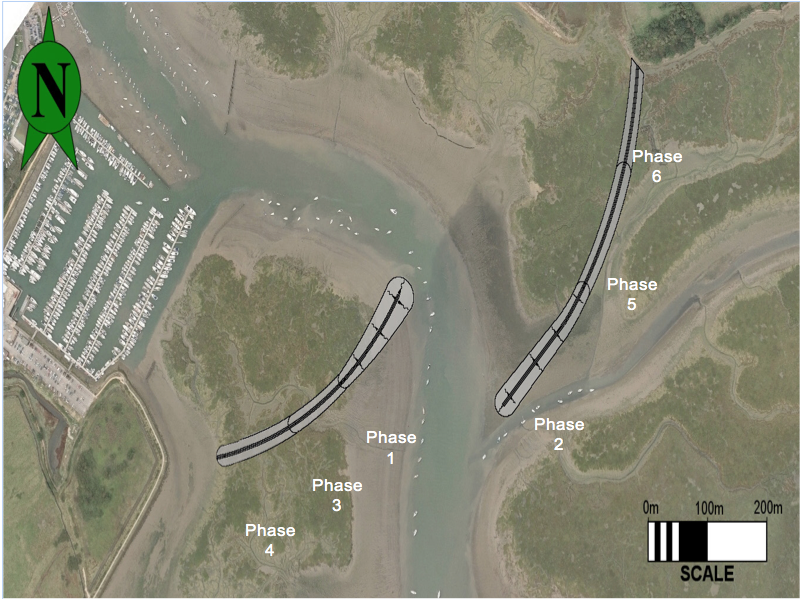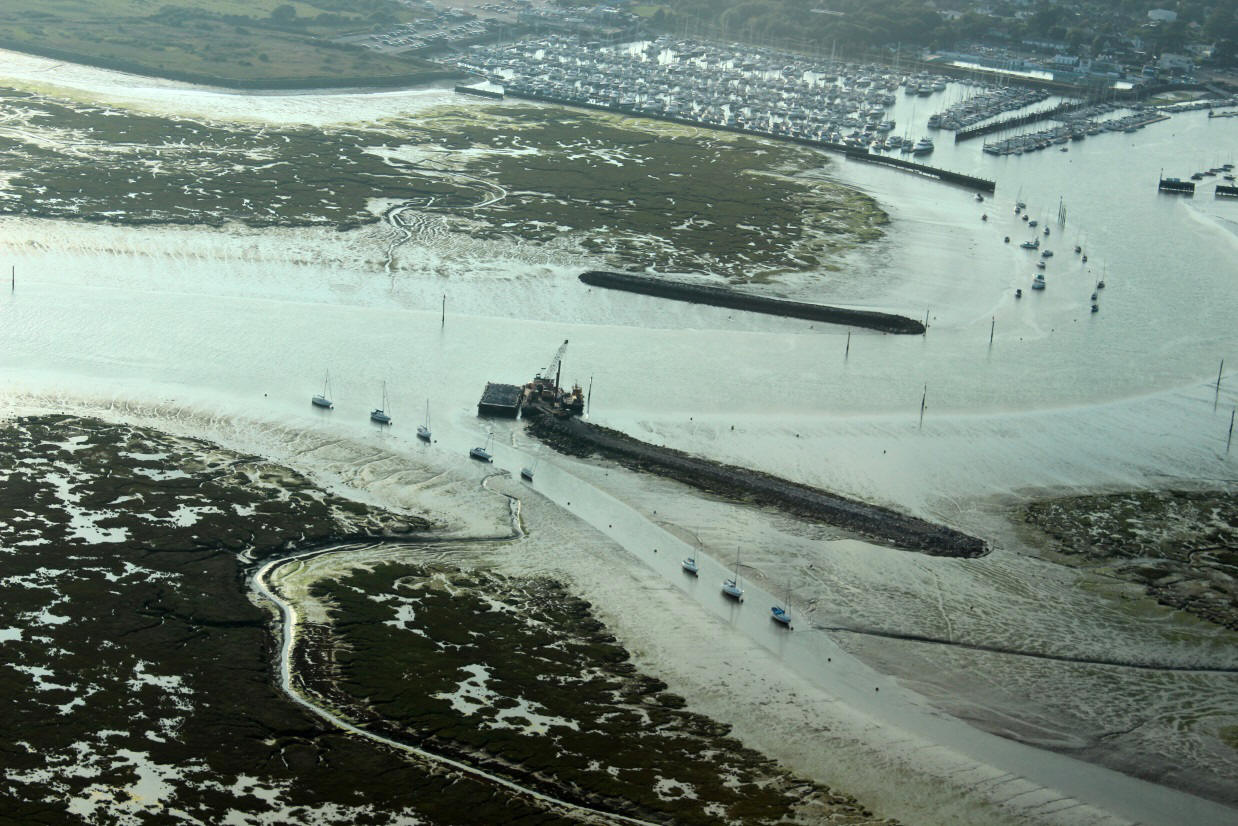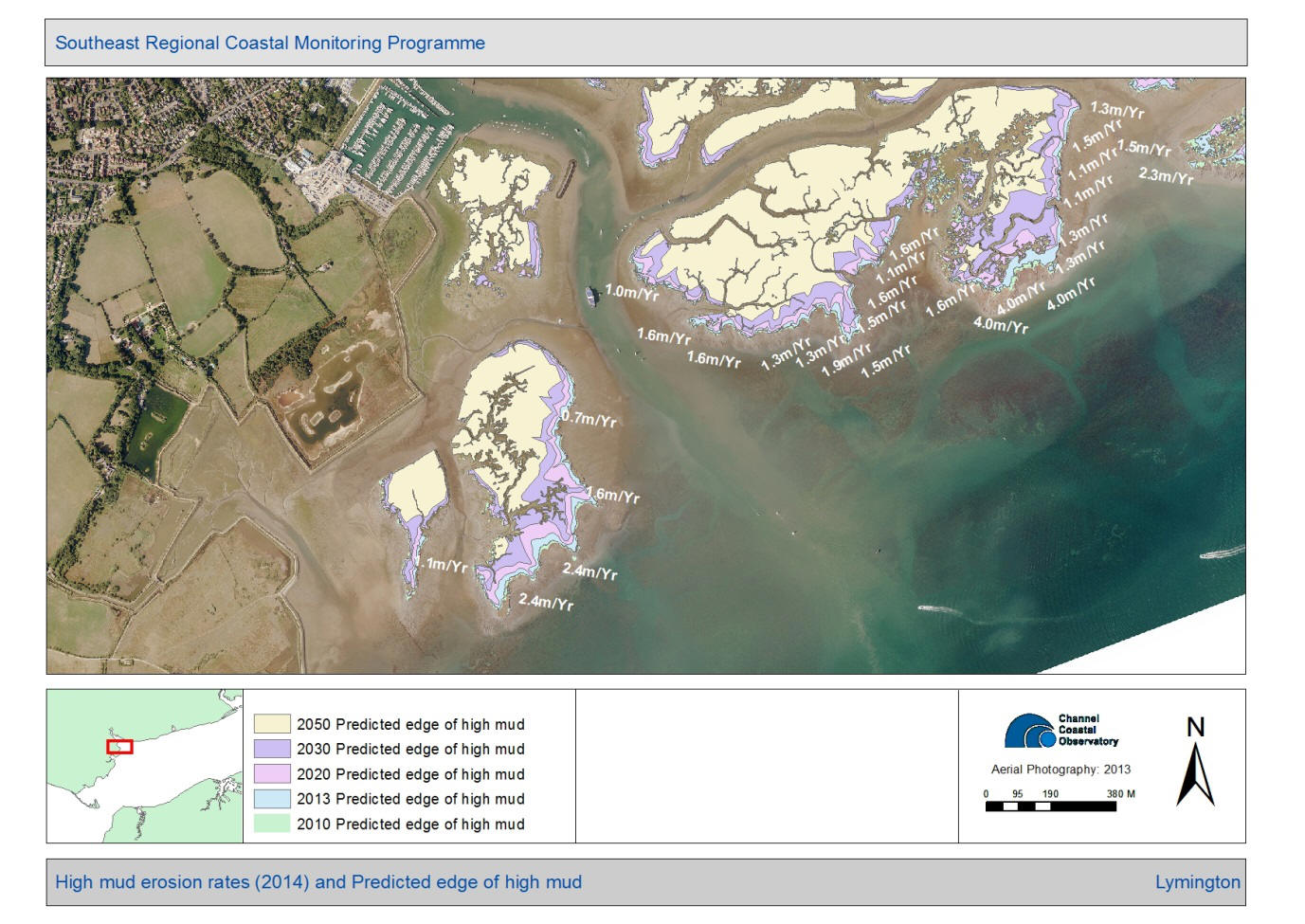Breakwaters
The first phase construction of a 100m long breakwater on the western side of the channel was completed in 2010. Construction of the second phase on the eastern side of the channel was completed in 2014. Funding of breakwater construction (and any loans needed) is through a harbour protection levy on users of the harbour.

Approximately every 5 years the Commissioners undertake a review of the most recent data for saltmarsh erosion and measure settlement of the first two phases of rock breakwater construction to inform when future phases of breakwater construction are likely to be needed. This information informs and updates our financial planning.
The most recent review was undertaken in June 2020 and the projected timing for the extension to the breakwater on the western side of the river (Phase 3) remains broadly unchanged. It is currently planned for this to take place between 2029 and 2032. It is also anticipated that at the same time it will be necessary to 'top up' the rock on the Phase 1 breakwater due to the predicted settlement. The Phase 2 breakwater on the east side of the river is forecast to provide the required level of protection for the foreseeable future.

Attempt to Reduce Marsh Erosion through Beneficial Use of Dredged Material
LHC’s overwhelming priority for the foreseeable future is to ensure the Harbour remains viable as protection is lost as the marshes retreat. The existing strategy to construct rock breakwaters in phases as the marsh recedes, is the ‘default option’ to ensure the harbour remains protected.
However, as noted above, Phase 3 will not be required until 2029 to 2032. In the meantime LHC continue to pursue low cost sustainable options to beneficially use sediment dredged from the harbour in order to replenish saltmarsh and slow down the rate at which it is being lost. If successful this could delay the rate at which future phases of the breakwater will be required.

The plan was to create a sacrificial reef within the bay that will shelter the marsh behind from wind wave action and provide a source of sediment to 'feed' the marsh in the immediate vicinity.
The latest monitoring report (August 2023) confirms that an area of mud of around 17,000m² has been raised by around 1.5m in height and has been successful at slowing down erosion of the marsh behind.
Where Next
While the technique described above has been successful at reducing erosion to the saltmarsh behind, the barges cannot get mud high enough in the tidal frame for new saltmarsh to grow.
We are therefore working with partners Land & Water / Earth Change, a marine contractor specialising in environmental enhancement projects, to undertake a trial of a new technique to move a significant quantity of the previously placed and consolidated sediment higher up the tidal frame onto adjacent lower lying areas of decaying saltmarsh.
The aim is to raise the trial area to the same level as supports the surrounding healthy high marsh to encourage new high marsh growth. If successful, it is hoped this new technique will offer the opportunity of large scale saltmarsh restoration. In December 2023, the Marine Management Organisation granted LHC a ten year licence to undertake the trial.
In December 2024, Hampshire and Isle of Wight Wildlife Trust partnered with LHC and Land and Water / Earth Change to make joint bids for grant funding to undertake the first and subsequent phases of the trial. Subject to achieving 3rd party funding, LHC are aiming to undertake the first phase of the trial in August 2024.
LHC is also a member of the Solent Forum Beneficial Use of Dredging in the Solent (BUDS) project to identify wider opportunities for beneficial use of dredged mud within the Solent. More details on the BUDS scheme (including supporting reports) is available on the Solent Forum website.